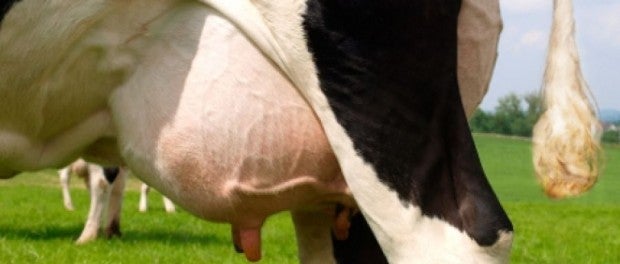Finding Flexibility in the Milking Schedule

There are many reasons to have one or more dairy cows on the farm. If you enjoy fresh milk, having your own cow to provide it is the way to go. Though milk is excellent to have, sometimes the time constraints of having one or more milk cows can be tough. If you have kids with extracurricular activities, for example, it is sometimes hard to attend those functions when you have dairy cows in need of milking twice daily. So the question is, how do you manage to get it all done?
After weaning calves and beginning the duty of milking twice a day, it can be tough to break away and experience life. Although this type of responsibility is a part of farm life, we all occasionally need a little bit of flexibility. It is because of this that many people may choose to avoid including milk cows or goats into their farm plan, but believe it or not, you really can have both a life and fresh milk. The fact of the matter is that yes, cows do need to be milked on a regular basis. However, there may be just enough flexibility in that schedule to allow you to accomplish other tasks away from the farm. It is just going to boil down to what is going on in your barn as to how you can tie it all together in a way that works for you.
There are several factors that dictate just how much time you can safely and kindly allow to pass between milkings, all of which depend on the state of your dairy cows. New mothers and mothers who recently endured the weaning process are often in need of a little more attention and thus should be milked on a rigid schedule. They’ve been through a lot and sticking pretty close to regular intervals is the least you can do to make things easy on them and provide relief. The same holds true with cows that simply produce a lot of milk and tend to fill up on a regular basis in that they in turn need to be emptied on a regular basis. Additionally, if you have a cow with mastitis milking needs to be done in 12 hour increments not only if you are administering medication but also to complete the process of eradicating the condition.
On the flipside, if your dairy cows are happy and loving life with no health problems, milking can be negotiated somewhat. This is not to say you can neglect it entirely, but you do have some breathing room. So if something comes up and that soccer tournament runs long making you an hour or two later to the milking stanchion, it is within reason to expect maintenance of the status quo with running into problems.
Lastly, when all else fails, don’t forget about the calf. In baseball, pinch hitters are used to keep the game going. If your milking game needs a little help, go to the pinch milker. This only applies prior to weaning, of course, but instead of keeping the calf off of mom for 12 hours and bottle feeding, let the calf do some of the work for you. Then plan excursions prior to the weaning of calves in order to give yourself a chance to attend whatever event or function is calling your name.
Ultimately what you have to remember is that it is important for a lactating mother to be able to express her milk supply. Not doing so becomes painful and can jeopardize her health, that of her young, and put a dent in milk production. Additionally, once mastitis sets it, it can be spread to other members of the herd, making avoiding this condition a priority even if it means missing a dinner with friends or night on the town.
The life of a famer in general, as well as that of a farmer with dairy cows means making sacrifices. Just make sure that while you take advantage of any wiggle room in the milking schedule that those sacrifices are made by you instead of your dairy cows. Always exercise caution, good judgement, and discretion when it comes to the intervals at which you milk your cows so that all parties involved are happy and healthy in the end.








 Your Privacy Choices
Your Privacy Choices
Leave a comment